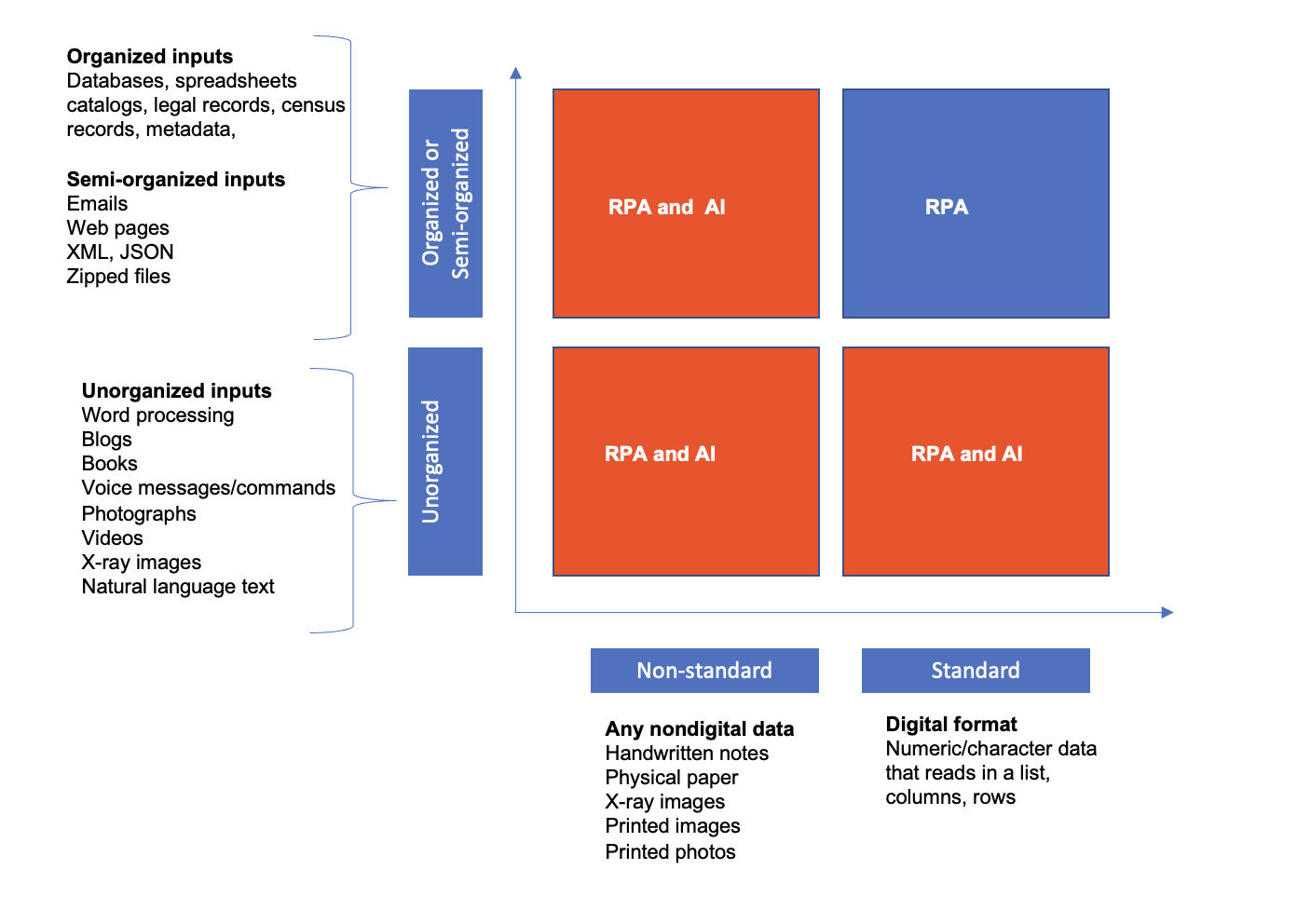Artificial Intelligence is Everywhere

Artificial intelligence (AI)-enabled kids
Sort of.
My seven-year-old daughter came from school with a sketch of a girl that she drew during her quiet time at her school. It was the usual but beautiful sketch that you'd see from seven-year-olds. I noticed an interesting line, "Powered by AI," written on the bottom right side of the drawing:

I wondered where she'd picked this up. When I asked her what she meant by "Powered by AI," her answer opened my eyes.
She couldn't say what AI stands for, but she said:
"Dad, you got a new toothbrush with AI in it. It teaches you to clean your teeth properly. Our vacuum cleaner has AI in it. You told me that it knows how to avoid furniture while cleaning. Mom told me that our Roti [Indian bread] making machine that mom loves has AI in it. You showed me how to search sunset pictures on Google Photos. You told me that it has AI in it. So, I wrote ‘Powered by AI’ on my sketch to show that the girl that I draw is very smart. It's also written on mom's bread maker machine."
She thinks AI is a 'magic sauce' that you add to anything to make it smart. It's kind of true. I was amazed at her observation. I'm sure she isn't the only kid that thinks like this. The new generation of kids are getting smarter and smarter with the available technology around them.
We all live with AI. We are all getting savvier with the uses of AI, whether knowingly or unknowingly.
Her answer made me wonder how many of us know about the new possibilities of AI and robotic process automation (RPA) that could transform industries. Additionally, how many of us can determine the need for AI when automating a business process using RPA without depending on experts?
Therefore, in this article, I’m exploring how to determine when it’s the right time to add AI in an organization to make it better and more efficient.
AI everywhere
AI is everywhere. Some examples are Apple's Siri, Amazon's Alexa, chatbots, streaming services such as Netflix, and social networking sites. Other examples are kitchen appliances, smartphones, wearables, and our new generation cars. Our interactions with these things can be tracked so AI can learn patterns to provide us with more personalized service.
In the world of automation, both AI and RPA can work together to drive operational enterprise efficiencies. Combining AI and RPA cuts process inefficiencies and makes humans’ lives easier. Global corporate investment in AI is in the billions and close to three digits.
What do AI and RPA bring to the table?
AI is complementary to RPA robots. RPA and AI work together to expand automation into all sorts of new areas, letting us automate more and more complex tasks. Here, we are talking about practical AI that builds more efficient businesses and enhances human experiences, allowing us to focus on higher-value work. We aren't talking about the sort of general AI that Elon Musk says is going to take over the world.
Sometimes, when RPA is discussed, robots are assumed to be rule based. The addition of AI to RPA has enabled us to look beyond rule-based bots. Combining AI and RPA adds more cognitive power and opens doors to many possibilities.
Some companies use AI for front- and back-office activities. Examples include claim processing, fraud detection, healthcare diagnosis, trading, e-commerce sites, clinical trials, and various business-specific workflows.
Companies who were early adaptors of AI used it to create a strong competitive advantage. AI advantage isn't a zero-sum game. Many of the early adopters believe that AI is critical to their business success today.
Here are some of the ways AI is used with automation:
Discover the bottlenecks in business processes using digital footprints such as transactional logs of various applications/systems
Read, extract, and transform various types of documents
Process natural language
Read and interpret a broad range of types of interfaces or screens
Interpret data as per human direction
AI also allows you to add cognitive power to robots to make decisions. The cognitive power can be sourced from large cloud provider companies, third-party solutions, or by building your own AI module.
How do you determine whether to use RPA or combine RPA and AI?
To help determine whether to use RPA or both RPA and AI, you can look at what information or data will be sent to a robot for processing (called “input type”). I’ve created a simple visual tool that can help you determine whether RPA or a combination of RPA and AI is best suited to your automation use case based on the input.

Sometimes, input data has a high degree of organization, making data sets easily searchable. For example, data organized in column and row formats. Let's call this kind of input organized data (typically referred to as “structured data”).
Sometimes, the input data isn't organized in any type of fashion. There's no format or structure to it. Let's call this input unorganized data (commonly referred to as “unstructured data”).
Sometimes, input isn't completely structured. It combines organized and unorganized data features. Let's call this semi-organized data—for example, an email. The organized parts of an email are the "To," "From," "CC," and "Received date" fields. The unorganized data is the email body because what is included in the email body changes from person to person, email to email.
For our email example, we know the data is in digital format so that computers can process it.
However, you may encounter a business process that still has non-digitized components. It may be handwritten notes or paper forms. Such non-digitized data is considered non-standard data, and input in any digital format is considered standard data.
Now, we're fully equipped to determine the recommended robot type using the following three simple steps:
Determine whether the robot will deal with organized, semi-organized, or unorganized input types.
Determine if the input type is standard (digital) or non-standard (not digital).
The intersection of step 1 and step 2 will help you identify whether RPA or RPA plus AI is best suited for your specific automation use case.
This quick determination of the recommended use of RPA or RPA plus AI helps in planning and roadmaps that are based on the rough order of magnitude (ROM) estimates. Determining the use of either RPA or a combination of RPA and AI also helps the automation team plan resources, prioritize the use case, and budget for the process. However, you'll still need to determine whether to us RPA or RPA plus AI during the detailed assessment phase of your project.
Conclusion
People often confuse building AI solutions from scratch and implementing existing AI solutions. The first one is difficult. The second one can be easy, and UiPath makes it easier.
You may also think your automation use cases are small or not complex enough to make an investment in AI. Often this isn't true. Anyone—from small organizations to large enterprises—can benefit from AI.
Using the UiPath Platform, AI becomes easily accessible. UiPath has built AI into every part of the UiPath Platform. A citizen developer can drag and drop AI components using UiPath Studio to build a robot with simplicity. Using UiPath Document Understanding, developers can easily build and deploy document processing robots to process a wide range of document types. UiPath robots can see elements with human-like recognition using AI computer vision.
Interested in reading more about this topic? Then I recommend our AI Playbook for your next read.
And there's still time to access the presentation recordings from UiPath AI Summit. The recorded sessions are available on demand so you can watch at your convenience.

Consulting Director, UiPath
Get articles from automation experts in your inbox
SubscribeGet articles from automation experts in your inbox
Sign up today and we'll email you the newest articles every week.
Thank you for subscribing!
Thank you for subscribing! Each week, we'll send the best automation blog posts straight to your inbox.



